Exhibition dates: 8th June – 29th August 2021
Curators: Thomas Weski and Laura Bielau
Michael Schmidt (German, 1945-2014)
Untitled, Berlin-Kreuzberg. Stadtbilder (Berlin-Kreuzberg. Cityscapes)
1981-1982
© Michael Schmidt, Foundation for Photography and Media Art with the Michael Schmidt Archive
Dark atmosphere of a grey reality
The contribution of German photographers to the development of photography in the 20th century cannot be underestimated. When we think of quantum leaps in the development of the medium and its languages, we can think of Wilhelm von Gloeden, August Sander, Lisette Model, Germaine Krull, Ilse Bing, Erich Salomon, Albert Renger-Patzsch, Bernd and Hiller Becher, Wolfgang Tillmans, Aenne Biermann, Erwin Blumenfeld, Bill Brandt, Candida Höfer, Andreas Gursky, Thomas Ruff, Thomas Demand and many more too numerous to mention. And then we have the (mainly Jewish) photographers of the German diaspora of the 1920s-1940s who emigrated to all parts of Europe, South America, America and Australia and who went on to influence photographers in their adopted countries.
Perhaps there is something inherent in the German psyche which promotes a certain awareness, a certain understanding of the mechanics of photography. Perhaps this is a link between German psychology (such as Urformen: the original, archetypal form1), psychoanalysis (such as Freud’s term Das Unheimliche: “the uncanny” in the sense of something that produces unease and is disturbing) and photography – a relationship which promotes objective seeing, seeing things in new and unexpected ways. Perhaps this ability to perceive in new ways has something to do with Germany’s European roots and that continent’s history of war, destruction and reclamation, where the archetypes are constantly being dissolved and constructed – in a circle which leads us back to the roots of German psychology. These are only thoughts which are slowly forming, nascent thoughts in a long process of research, which could possibly be interesting, or not.
Added to these many German photographers is another intelligent, inventive artist that I admire – an artist that also redefined the language of photography in the 20th century. His name is Michael Schmidt.
Much as Bill Brandt considered “atmosphere” a term fundamental in his images (“I only know it is a combination of elements … which reveals the subject as familiar and yet strange”) in order to capture the very essence of a place, so Schmidt’s inimitable understanding of his environment and its people, namely his beloved Berlin, allowed him to dissect and disseminate the dystopian “atmosphere” and habitus of its inhabitants.
Schmidt (and here I précis a lot of people) perceives and reacts to the world, offering through “fragmentation, condensation, abstraction” a “sense of space distorted in depth”, in which “existence is hollowed out to its extremes” that “take his subjects out of their historical anchorage” to offer a “harsh and completely unique view of the fragility of human existence” – “a subjective, deeply felt work of the life and suffering of people in the shadow of Berlin.”
“This is the strength of Michael Schmidt’s work. An ability to transcend the present – its present – and to fragment it in order to better represent it. Creations with shallow backgrounds, which play with nuances and break free from simple black and white to offer a shade of grey, evoking the rainy sky of Berlin. A true love letter, tortured, raw, deep and complex, to the city where it was born, grew and disappeared.”2
As Joe Lloyd has observed of Schmidt’s masterpiece Waffenruhe (Ceasefire) (1985-1987) “It is difficult to imagine a future for these anxious youths, whose lives are encircled by an evil empire on the cusp of dissolution. The Berlin Wall appears on the verge of subsiding. Vegetation grows unbidden, new life to replace the old. Schmidt turns his camera on the city’s insignificant minutiae, a shadowy realm between the sights and, in doing so, captures its liminality.”3
Liminality is one of the key words I associate with the work of Michael Schmidt… the other being language.
Liminality is a term used to describe the psychological process of transitioning across boundaries and borders. The term “limen” comes from the Latin for threshold; it is literally the threshold separating one space from another. It is the place in the wall where people move from one room to another.4
As he probed and prodded the threshold of existence in his photography, Schmidt transited the line between representation and abstraction, photographing the ever mutable spaces of Berlin and the people that were stationed there, under the Wall – even as the subject matter he chose transitioned from dour city to blank officer workers, from women to children, old people and disaffected youths.
Schmidt sought new ways to transition across the boundaries and borders of both the city and his mind in order to create a “new reality” of visual language, not to reproduce real things as he said, but to show how things really are. As the curator Thomas Weski has observed, “”Every time he finished a series, he went through periods of turmoil where he looked for new ways to approach reality…”5
The liminal, interstitial spaces the artist creates, these fragments of time, these “shards of reality” are tough, gritty photographs – of love, desire, work, destitution, despair, loneliness, sadness and fortitude – realities expressed in sombre tones of grey that recite a sense of foreboding. Forty years after the end of the war, the clash of cultures between stoicism and rebellion, between rich and poor, between communism and freedom is still in full flight in a divided Berlin… for here (unlike Brandt’s photographs where the fragments are part of the whole) there is no unity, no ceasefire, no holistic healing, there is only a language of dissolution and despair. Here, there is no way hope can be deployed to distort one’s relationship with reality.
Schmidt’s relationship between photography and subject is always about the artist metaphorically “becoming naked” and open, pushing the boundaries of the possible when looking for new ways to approach reality. Schmidt’s language of the fragmentation bomb shows the benefits of working on language to break any self-imposed limits – to picture the ‘deep time’6 so intimately linked with the life of the city.
Dr Marcus Bunyan
Footnotes
1/ “The original, archetypal form… the first form of a narrative from which all known variants emerged; the archetype version that provides a model and pattern for all variants (alternatively, Urform). The term comes from the German Urform (plural Urformen), meaning primitive form, original form, or archetype, and is derived from Ur, the mythological first city.
Randal S. Allison. “Ur-Form,” in Thomas A. Green (ed.,). Folklore: An Encyclopedia of Beliefs, Customs, Tales, Music and Art Volume 1, ABC-CLIO, 1997, p. 823.
2/ Lou Tsatsas. “Michael Schmidt décompose Berlin au Jeu de Paume,” on the Fisheye Magazine website June 2021 [Online] Cited 12/08/2021
3/ Joe Lloyd. “Michael Schmidt Retrospective: Photographs 1965-2014,” on the Studio International website 12/10/202 [Online] Cited 12/08/2021
4/ Larson, P. “Liminality,” in Leeming, D.A. (eds). Encyclopedia of Psychology and Religion. Springer, Boston, MA, 2014
5/ Thomas Weski quoted in Laure Etienne. “Michael Schmidt: A New German Perspective,” on the Bind Magazine website 17 June 2021 [Online] Cited 12/08/2021.
6/ “As the Anangu people of Uluru explain, the land contains proof of a spoken narrative, like a photograph. The land’s markings are the archives, the inscriptions revealing and proving deep history stories.”
Ann McGrath. “‘All things will outlast us’: how the Indigenous concept of deep time helps us understand environmental destruction,” on The Conversation website, August 19, 2020 [Online] Cited 29/08/2021.
Many thankx to Jeu de Paume for allowing me to publish the photographs in the posting. Please click on the photographs for a larger version of the image.
“Realism consists not in reproducing real things, but in showing how things really are.”
“Black and white are always the darkest grey and the lightest grey.”
Michael Schmidt
“His language is a language of precision and his tool is the most simple one: a small, 35mm camera, and a few rolls of films. His pictures look simple at first glance, and their anti-sentimentality, their refusal of all the tricks of the usual seduction, their concision and their clarity, give them great efficiency. They show what they show but they manage to retain an opacity, a mystery, and they become a support for our imagination.”
“Schmidt does not accuse, he simply reveals, and the interpretation is left to the viewer. He can do so because he has confidence in the power of his medium and confidence in the intelligence of the viewer.”
Luc Delahaye
“His photography no longer follows a means of pure documentation, but rather formulates a dystopian attitude towards the life of a generation shortly before the fall of the wall in surprising image contexts. Schmidt develops a world of breaks and gaps that defies any claim to a sovereign overview.”
Einar Schleef
“Amongst the pages of photographer Michael Schmidt’s seminal book, ‘Waffenruhe’ – a fragmented psychological portrait of West Berlin shot between 1985 and 1987 – is an image of an outstretched wrist, the camera’s flash igniting a jagged scar across its milky skin. The space opposite is obscured with a blank pull-out page that expands to reveal a tree in full bloom, bright flowers swelling between branches. The Berlin Wall looms in the background, like a shadow sunshine can’t dispel. In Schmidt’s Waffenruhe, life and death cohabitate – existence is hollowed out to its extremes. Four decades after the end of World War II, Waffenruhe (German for “ceasefire”) captured the gloom of a bisected city as it waited for the smoke to clear.”
Ashleigh Kane. “Why Michael Schmidt is the perfect photographer for our dystopia,” on the Highsnobiety website February 2021 [Online] Cited 12/08/2021
Exposition “Michael Schmidt. Une autre photographie allemande”
Berlin-Wedding 1976-1978
Michael Schmidt (German, 1945-2014)
Müller-Ecke Seestrasse, Berlin-Wedding (Berlin-Wedding)
1976-1978
© Michael Schmidt, Foundation for Photography and Media Art with the Michael Schmidt Archive
Michael Schmidt (German, 1945-2014)
City Inspector at the Wedding District Office
1976-1978
From Berlin-Wedding
Silver gelatin print
43.4 x 46cm
© Michael Schmidt, Foundation for Photography and Media Art with the Michael Schmidt Archive
Michael Schmidt (German, 1945-2014)
City Inspector at work in his Wedding District Office
1976-1978
From Berlin-Wedding
Silver gelatin print
43.4 x 46cm
© Michael Schmidt, Foundation for Photography and Media Art with the Michael Schmidt Archive
Michael Schmidt (German, 1945-2014)
Schüler der 4. Klasse, Grundschule, Berlin-Wedding (Pupil, elementary school, Berlin-Wedding)
1976-1978
From Berlin-Wedding
Silver gelatin print
© Michael Schmidt, Foundation for Photography and Media Art with the Michael Schmidt Archive
Michael Schmidt (German, 1945-2014)
Schüler der 4. Klasse, Grundschule, Berlin-Wedding (CM1 pupil, primary school, Berlin-Wedding)
1976-1978
From Berlin-Wedding
Silver gelatin print
© Michael Schmidt, Foundation for Photography and Media Art with the Michael Schmidt Archive
Michael Schmidt (German, 1945-2014)
Untitled from Berlin-Wedding
1976-1978
Silver gelatin print
24 x 30cm
© Michael Schmidt, Foundation for Photography and Media Art with the Michael Schmidt Archive
Jeu de Paume in Paris is the second venue of the major retrospective of Michael Schmidt’s work. Michael Schmidt (1945-2014) occupies a unique position in contemporary German photography and internationally. Born in Berlin and with no formal training in photography, he discovered the medium as a mode of artistic expression in the mid-1960s. For each of his themes he developed his own approach to reality. His oeuvre owing to continual exploration and innovation has been seminal for a younger generation of photographers. The exhibition, the most comprehensive to date, offers a complete overview of his oeuvre from 1965 to 2014.
After the presentation at Jeu de Paume, Paris (2021) and Hamburger Bahnhof – Museum für Gegenwartskunst Berlin (2020), the exhibition will be on view at the Museo Nacional Centro de Arte Reina Sofia in Madrid (September 22 – February 28, 2022) and the Albertina Museum in Vienna (March 24 – June 12, 2022).
Michael Schmidt (1945-2014) occupies a unique position in contemporary German photography. Born in Berlin, he was self-taught, adopting photography as his artistic medium in the mid-1960s. For each of his themes, he developed his own approach to reality. The Michael Schmidt retrospective at the Jeu de Paume, the most comprehensive to date, offers a complete overview of his oeuvre from 1965 to 2014.
Press release from Jeu de Paume
“At the end of the 1970s, with the series ‘Berlin-Wedding’, Michael Schmidt imposed a very rigid set of rules on himself in order to achieve a form of neutrality, if such a thing is possible… He later said he felt like he had pushed himself into a corner with these rules, and in the early 1980s he struggled to relax them. He went back to shooting spontaneously, camera in hand and no longer on a tripod. This led to “Waffenruhe (Ceasefire),” where he broke free from those rules. It became less a question of delivering a precise description than of communicating a feeling.”
~ Thomas Weski quoted in Laure Etienne. “Michael Schmidt: A New German Perspective,” on the Bind Magazine website 17 June 2021 [Online] Cited 12/08/2021.
“Every time he finished a series, he went through periods of turmoil where he looked for new ways to approach reality… He described himself as a “dead-end photographer” who would get into one lane and needed a long time to get out of it. ”
~ Thomas Weski quoted in Laure Etienne. “Michael Schmidt: A New German Perspective,” on the Bind Magazine website 17 June 2021 [Online] Cited 12/08/2021.
“Michael Schmidt’s raw, harsh, and fragmented photographs of Waffenruhe are less documents of the existing situation at that time than they are creating a certain dark atmosphere, which echoed the ‘no future’-feeling of my generation.”
~ Thomas Weski
“Man is at the centre of the environment. He is shaped by it and he shapes it… As such, I don’t want to show him isolated, but in his environment, I want to show how he lives, where he works, what he does in his free time.”
~ Michael Schmidt quoted in Laure Etienne. “Michael Schmidt: A New German Perspective,” on the Bind Magazine website 17 June 2021 [Online] Cited 12/08/2021.
Berlin nach 1945
Michael Schmidt (German, 1945-2014)
Berlin nach 1945 (Berlin after 1945)
1980
Silver gelatin print
23.4 x 29.2cm
© Michael Schmidt, Foundation for Photography and Media Art with the Michael Schmidt Archive
In 1980 Michael Schmidt photographed his series “Berlin after 1945”. West Berlin already had a reputation as a young and rebellious city. Schmidt portrayed his hometown quite differently: grey on grey, barren, if not dreary. With his approach of portraying the human-shaped living environment instead of untouched nature, Schmidt became a representative of the New Topographics movement, which had recently emerged in the USA: these photographers no longer focused on an ideal conception of landscape, but rather on human intervention.
Google translated from Michael Schmidt. “So fühlte sich das Leben in Berlin an,” on the Zeit Online website 17 October 2020 [Online] Cited 12/08/2021.
Michael Schmidt (German, 1945-2014)
Berlin nach 1945 (Berlin after 1945)
1980
Silver gelatin print
© Michael Schmidt, Foundation for Photography and Media Art with the Michael Schmidt Archive
Michael Schmidt (German, 1945-2014)
Berlin nach 1945 (Berlin after 1945)
1980
Silver gelatin print
© Michael Schmidt, Foundation for Photography and Media Art with the Michael Schmidt Archive
Berlin-Kreuzberg. Stadtbilder 1981/82
Michael Schmidt (German, 1945-2014)
No title, Berlin-Kreuzberg. Stadtbilder (Berlin-Kreuzberg. Urban views)
1981/82
© Michael Schmidt, Foundation for Photography and Media Art with the Michael Schmidt Archive
How Schmidt broke away from the strict image structure of his photographs can be seen in his series “Berlin-Kreuzberg. Stadtbilder 1981/82”. The camera moves closer to the sitter and no longer locks them in a strict composition.
Google translated from Michael Schmidt. “So fühlte sich das Leben in Berlin an,” on the Zeit Online website 17 October 2020 [Online] Cited 12/08/2021.
Michael Schmidt (German, 1945-2014)
No title, Berlin-Kreuzberg. Stadtbilder (Berlin-Kreuzberg. Urban views)
1982
© Michael Schmidt, Foundation for Photography and Media Art with the Michael Schmidt Archive
Michael Schmidt (German, 1945-2014)
No title, Berlin-Kreuzberg. Stadtbilder (Berlin-Kreuzberg. Urban views)
1981/82
© Michael Schmidt, Foundation for Photography and Media Art with the Michael Schmidt Archive
Michael Schmidt (German, 1945-2014)
No title, Berlin-Kreuzberg. Stadtbilder (Berlin-Kreuzberg. Urban views)
1981/82
© Michael Schmidt, Foundation for Photography and Media Art with the Michael Schmidt Archive
Michael Schmidt (German, 1945-2014)
No title, Berlin-Kreuzberg. Stadtbilder (Berlin-Kreuzberg. Urban views)
1981/82
© Michael Schmidt, Foundation for Photography and Media Art with the Michael Schmidt Archive
The bulk of Schmidt’s work in the 70s and early 80s was commissioned by local authorities, and served as a survey of West Berlin’s crumbing Wall-side districts. If they wanted straightforward documentation, they should have turned elsewhere. In Kreuzberg, Schmidt captured two tree trunks rising from the ground as if a pair of legs, and in Wedding an empty phone box, the pages of its directory left open. Schmidt’s Berlin is riddled with holes. We see a row of tenements from behind, naked and exposed by the loss of their adjoining street. A similar – or perhaps the same – row is glimpsed diagonally through a gap in a scaffolding platform. This is a city scrambled, quite unlike the straight-ahead perspectives of Struth’s near-contemporaneous Unconscious Places series. When we see council employees, the walls of their chintzy apartments and spartan offices seem like armour against the bleak outside.
Text from Joe Lloyd. “Michael Schmidt Retrospective: Photographs 1965-2014,” on the Studio International website 12/10/202 [Online] Cited 12/08/2021.
Michael Schmidt (German, 1945-2014)
No title, Berlin-Kreuzberg (Berlin-Kreuzberg)
1969-1973
© Michael Schmidt, Foundation for Photography and Media Art with the Michael Schmidt Archive
Foreword
Michael Schmidt (1945-2014) occupies a unique position in contemporary German photography. Born in Berlin, he was self-taught, adopting photography as his artistic medium in the mid- 1960s. For each of his themes, he developed his own approach to reality. The Michael Schmidt retrospective at the Jeu de Paume, the most comprehensive to date, offers a complete overview of his oeuvre from 1965 to 2014.
Schmidt initially focused on Berlin in his work, receiving commissions in the early 1970s from district offices and from the Berlin Senate on districts such as Kreuzberg and Wedding and on social themes. The Waffenruhe (Ceasefire) book and exhibition project, a visually stunning psychological study of the still divided city, which was shown in Berlin for the first time in 1987, brought Schmidt international renown. With Ein-heit / U-ni-ty, a group of works examining the unification process, he shifted his focus away from the world of his native city.
Schmidt’s oeuvre comprises portraits, self-portraits, landscapes and still lifes. His work highlights the importance of urban space, the continued relevance of history, female identity, the role of the province and the significance of nature. In his last project, he highlighted the contemporary food industry.
In addition to providing a glimpse of sometimes very rich ensembles through original prints, this retrospective also includes work prints, book projects and archive documents. As far as possible, it respects Schmidt’s own approach to presenting and displaying his works. His career was exemplary for the way he endlessly refined his photographic practice and explored new publication formats. The exhibition thus reveals a unique approach to photography in the context of German post-war and contemporary photography, at odds with the Subjective Photography of Otto Steinert and the Düsseldorf School centred around Bernd and Hilla Becher. Schmidt’s oeuvre is now seen as one of the outstanding pillars of photography in the history of German twentieth-century art. As well as celebrating the work he produced in the course of his lifetime, the exhibition seeks to cover the development of photography as a mode of artistic expression since the 1970s.
Thomas Weski, curator of the exhibition
Introduction
On the occasion of the reopening, Jeu de Paume offers for the first time in France a large dedicated exhibition to photographer Michael Schmidt, considered one of the major figures of 20th century German art. This large chronological retrospective pays tribute to the artist through original prints, unpublished works and a vast corpus of archives that illustrate the evolution of his work spanning nearly five decades.
A Model
Michael Schmidt wrote a section of the history of photography. Through his work as a photographer and teacher he notably influenced artists like Andreas Gursky, with whom he befriends at the end of the 1970s. He is still a model for a whole generation of young photographers.
West Berlin
Self-taught photographer born in Berlin in 1945, Michael Schmidt devoted most of from his photography to his hometown, more particularly in West Berlin, where he will live until his death in 2014. The districts of Kreuzberg and, more particularly Wedding, were his favourite places. Initially portrayed in a purely documentary style (most often of order), Schmidt will detach himself from traditional visual language and in the 1980s look for a more daring vocabulary.
Postwar
Beginning in the middle of 1960s the postwar work of Michael Schmidt can be considered as a process of the quest for artistic identity, and also as an illustration of the development artistic photography in postwar Germany.
Grey
In the late 1970s, grey becomes the chromatic element central to the photographer’s work, which he considers a full colour. Wishing to describe the world around him, the artist cannot be limited to the use of black and white, who are too Manichean for his taste. The world is undefined, not so neat and clear. Schmidt is looking for more nuance, he has need a wider palette. He draws, then, in these grey tones that we find in the skies of Berlin, the cityscapes and interior views where characters appear weakly illuminated.
On the occasion of the 75th anniversary of the birth of Michael Schmidt, Jeu de Paume presents a large retrospective of this artist, considered one of the major pillars of the history of 20th century German art.
A tribute to a great photographer, this exhibition will present originals, unpublished work prints, book projects and other archives illustrating the evolution of his artistic work. The exhibition also highlights the process of recognising photography as a form of artistic expression in Germany and Europe from the 1970s.
Like Bernd and Hilla Becher, Michael Schmidt is among the most influential post-war photographers. He tirelessly developed his work for five decades. Through the publication of his work in the form of books and installations, always in dialogue with their place of exhibition, he developed different types of innovative presentation. By the incessant renewal of its formal language and by the choice of its themes, Michael Schmidt wrote a part of the history of photography and is today a role model for a whole generation of young photographers.
Born in Berlin on October 6, 1945, it was in this city that he lived and worked until his death in 2014. This autodidact works as a photographer from the mid-1970s, initially exclusively in his hometown. This is where the series dedicated to Kreuzberg and Wedding saw the light of day, – two districts of West Berlin –, which already go beyond the simple description of a neighbourhood, taking on a broader meaning. It is with the project, book and exhibition developed in collaboration with the director and playwright Einar Schleef, Waffenruhe (Ceasefire), first presented in Berlin in 1987, that Michael Schmidt does undeniably artistic work.
This series is made up of raw images with a loaded atmosphere, which draw a very personal portrait of the city near the end of the cold war – and of its youth – a city still cut in half, shortly before the change of epoch.
Michael Schmidt abandons this focus on the thematic universe of Berlin with the series Ein-heit (Uni-té), in which he explores the visual languages of the different forms of society and different political systems that marked Germany in the 20th century. He uses on this occasion already mediatised images that he mixes with photographs taken by himself, publishing everything in a book without text. The first exhibition of this series is in 1996 at the Museum of Modern Art, New York.
Schmidt was thus the first German photographer for decades to have personal exposure in this place. Subsequently, he devotes other work to the image of the woman, to the role of regions and the importance of nature. His last big series, Lebensmittel (Foodstuffs), in which he explores contemporary food production, has earned him the Pictet Prize just a few days before his death.
The exhibition
First photographs, commissioned works and series, 1965-1985
Michael Schmidt discovered an interest in photography when he was working in the West Berlin police force. Although he joined amateur photography clubs, he was chiefly self-taught, working hard to improve his technique. In the mid-1960s, he took the first photographs that he did not reject later on. Although the motifs in these early photographs vary greatly, they all defy the quick readability that is usually associated with the medium.
From his earliest photographic work of the mid-1960s to Germany’s reunification, Schmidt chose his native city of Berlin as his main subject, examining it from various angles. By 1973 he was working as a professional photographer, having been commissioned by the district office in Kreuzberg to do a book on the neighbourhood. It was published in the same year, with a second edition being printed almost immediately. It was followed by commissions from other city districts and Berlin’s Senate. In Die berufstätige Frau in Kreuzberg (The Working Woman in Kreuzberg) he depicted a typical day in the life of two women juggling work and leisure.
In the early 1970s he began teaching photography courses at colleges of further education. In 1976, he founded the Werkstatt für Photographie (Workshop for Photography) at the Volkshochschule Kreuzberg, which continued until 1986. Works by contemporary American photographers were exhibited there that had not previously been accessible to the German public. From 1976 to 1978, he photographed the Berlin-Wedding district and its inhabitants in a strictly documentary style. He made prints in rich shades of grey and published the series in 1978.
Between 1978 and 1980 he photographed Berlin’s Friedrichstadt neighbourhood in the south of the city, which was badly damaged during the Second World War. These photographs capture the mood of post-war West Berlin, a city scarred by gaps between buildings, brownfield sites and fire walls. Dominant motifs include urban wastelands and utility buildings, which he photographed in diffuse light using a large plate camera. In these works, Schmidt found pictorial solutions that straddle the boundary between documentation and abstraction. His Berlin nach 45 (Berlin after 1945) was not published until 2005, twenty-five years after the photographs were taken.
In 1980 in another project funded by the Berlin Senate he documented the everyday lives of four people dealing with chronic illness or disability. This work was published under the title Benachteiligt (Disadvantaged).
With the photo book Berlin-Kreuzberg. Stadtbilder, published in 1983, he began turning away from the traditional documentary idiom, experimenting with a more subjective approach.
In the mid-1990s, Schmidt identified his archive as a potent new source for reinterpreting earlier work. It assumed growing importance for him and he returned to it with increasing regularity in order to subject his early work to a critical re-examination and to make new prints. In the late 1990s, for example, for his project Menschenbilder (Ausschnitte) (Pictures of People (Excerpts)), he presented re-framed versions of an older series of portraits. Divorced from their previous context, the portraits became emblems of the human condition.
At that time, Schmidt also published Selbst (Self), a series of self-portraits dating from the mid-1980s, in which he appeared directly and unsparingly, in a self-critical attitude.
Waffenruhe (Ceasefire), 1985-1987
Unlike the studiedly sober photos of his earlier series, the portrait of the still divided city that Schmidt created in the mid-1970s in the book and exhibition project Waffenruhe, with its condensed, fragmentary, strongly contrasting black and white photographs, is highly subjective and multifaceted. With this work group, the photographer used a more evocative approach to convey the complex and moribund political situation in Berlin.
Here Schmidt eschewed a documentary approach in favour of unexpected pictorial sequences that express the dystopian attitude of a generation living before the fall of the Wall. Schmidt creates a picture of a world marked by fragmentation and discontinuity which remains open to interpretation. The photographs in the artist’s book are interwoven with a text by theatre director and writer Einar Schleef, which offers a very personal and uncompromising take on the fragility of human existence.
The project, funded with public money as part of the celebrations marking Berlin’s 750th anniversary, was first shown in the Berlinische Galerie at the Martin-Gropius-Bau in the immediate vicinity of the Wall. When the Waffenruhe series was included in a group exhibition at MoMA in New York, in 1988, it brought Schmidt immediate international notoriety.
Portraits, 1987-1994
Natur (Nature), 1987-1997
89/90, 1989-1990
Architektur (Architecture), 1989-1991
In between his major series, Michael Schmidt created work of more modest scope, which afforded him more artistic freedom and enabled him to hone his photographic method and pictorial language. The works that followed Waffenruhe (Ceasefire) are characterised by their tight framing, shallow depth of field and formats that were unusually large for the time. In them Schmidt focused increasingly on architecture and portraiture, unrestrained by any concern for intelligibility. Motifs became detached from their urban or personal contexts, functioning as emblems of metropolitan life, history and society. The series Architektur (Architecture) and Portraits are distinguished by the presence and materiality of their objects and the immediacy of encounter.
In 1989, Schmidt turned his attention to his native city for one last time, recording visual traces of German unification. He found many of his motifs in what used to be the border zone between the wall and no man’s land. This work, entitled 89/90, was not published until 2010.
Similarly, the photos he was taking around the same time of the rural landscape near his second home in Lower Saxony were not published until much later, when he assembled them in the artist book Nature shortly before his death. The book testifies to the importance he attached to landscape during this part of his life.
Ein-heit (U-ni-ty), 1989-1994
This series, which took shape during reunification, is concerned with history and the universal symbolism of the dominant social systems in Germany since 1933: National Socialism, Socialism and Democracy. This is the context for the photographer’s examination of the individual’s essential role in society and the stand they choose to take.
For Schmidt, a published image was an integral part of objective reality and no less worthy of being photographed than, say, a person or a building. In Ein-heit/U-ni-ty, he took this approach further. His photographs of photographs, which account for roughly one third of this series, comprise severely cropped and occasionally inverted photographs together with straightforward renderings of existing photographic material, which he typically combined with his own photographs. In so doing, Schmidt reformulates the content of the original photographs for his own purposes, depriving them of their unambiguousness and added further layers of possible meaning. He also used the technique of repeating and varying motifs he had deployed in some of his early works. Arranged in this way, the photographs form the grammar of a unique visual idiom, one that is challenging for viewers, but rich in associations. Ein-heit/U-ni-ty premiered in 1996 at MoMA in New York, where it was the first solo exhibition devoted to a German photographer for several decades.
Frauen (Women), 1997-1999
In the late 1990s, Michael Schmidt embarked on a series of portraits of young men and women. He eventually focused on women from the younger generation, shooting portraits and photographs of their bodies, both fully dressed and in the nude. In Schmidt’s view, these young women’s own sense of self-worth was increasingly reflected in their relationship to their own bodies. His photographs examined how a sense of individuality was being affected by socially mediated norms and ideals. The phenomenon made itself felt in a wide range of spheres, from the choice of outer garments and underwear to the stylisation of the body, even the private parts. He reveals the traces left by this growing imposition of uniformity on physical appearance in the form of posture and bearing, scars and lesions.
Schmidt interpreted these phenomena as the formative collective experience of an entire generation, as was evident in his exhibitions of the Frauen group of works. He presented the works as a block or tableau, emphasising what this age group had in common instead of the individual. Closer inspection reveals that this group of works added another facet to the photographer’s preoccupation with the role of the individual in society.
In 2000, Schmidt published the Frauen series in an eponymous artist’s book. At the 6th Berlin Biennale in 2010, he showed extracts in the form of full-page ads in a national newspaper and as posters in public spaces.
Irgendwo (Somewhere), 2001-2004
Lebensmittel (Foodstuff), 2006-2010
Following Germany’s reunification, Michael Schmidt never photographed Berlin again. Instead, he developed an interest in provincial scenes, as these were in his view both interchangeable and conducive to a sense of identity. Having acquired a caravan, he and his wife set off on tours across Germany – sixteen in all. He published the resulting images in an artist’s book entitled Irgendwo (Somewhere). They were exhibited outside Germany’s big cities. The experiences he gained on these trips and his increasing interest in eating and drinking, mirroring that of German society as a whole, led to a series entitled Lebensmittel (Foodstuff). For this, Schmidt carried out research in Germany, Norway, the Netherlands, Austria, Italy and Spain, where he visited sausage, pasta and cheese factories, fish farms, fruit and vegetable farms, fattening farms and abattoirs, green houses, olive plantations, insect farms and food processing plants.
In Lebensmittel (Foodstuff), Michael Schmidt used colour for the first time in his work, in addition to his customary black and white. The pictures are untitled and make no reference to location, making it impossible to pin them down geographically. Schmidt developed further the method he first used in Ein-heit/U-ni-ty, creating unsettling works that sometimes fuse two different halves or contain repeated images or shapes, or else variations of motifs. The result undermines belief in the documentary power of photography and the universal validity of the isolated shot.
Often it remains unclear what foodstuff is actually being presented. Both failsafe identification and seasonality have become things of the past, with production now oriented towards standardisation, alienation and globalisation rather than individuality, transparency and regional context. Schmidt critiques the excesses of an economic system that is notorious for its wastefulness. Today’s crises make it clear that we have arrived at the limits of agricultural growth. Schmidt’s photographs reflect this fact and the loss of confidence in the idea of permanent growth.
For this series, he was awarded the prestigious Prix Pictet only a few days before his death in 2014.
Waffenruhe (Ceasefire), 1985-1987
Michael Schmidt (German, 1945-2014)
Untitled from Waffenruhe (Ceasefire)
1985-1987
Silver gelatin print
90 x 69.6cm
© Michael Schmidt, Foundation for Photography and Media Art with the Michael Schmidt Archive
Waffenruhe (Ceasefire) (1985-87), inaugurated the second act of Schmidt’s career. It remains his masterpiece, and one of the most intoxicating photographic projects of the late-20th century. Laying aside the realism of his first two decades, Schmidt instead shot voraciously without quarter, before embarking on an intensive process of editing and ordering. The final works were then exhibited like a continuous reel, a sequence whose parts combine in the mind to construct a place, an atmosphere and narratives. …
This is the Berlin of Wim Wenders’ Wings of Desire, except without that film’s passage to hope. Schmidt’s greyscale world never erupts into technicolour. It is difficult to imagine a future for these anxious youths, whose lives are encircled by an evil empire on the cusp of dissolution. The Berlin Wall appears on the verge of subsiding. Vegetation grows unbidden, new life to replace the old. Schmidt turns his camera on the city’s insignificant minutiae, a shadowy realm between the sights and, in doing so, captures its liminality.
Text from Joe Lloyd. “Michael Schmidt Retrospective: Photographs 1965-2014,” on the Studio International website 12/10/202 [Online] Cited 12/08/2021
“This is the strength of Michael Schmidt’s work. An ability to transcend the present – its present – and to fragment it in order to better represent it. Creations with shallow backgrounds, which play with nuances and break free from simple black and white to offer a shade of grey, evoking the rainy sky of Berlin. A true love letter, tortured, raw, deep and complex, to the city where it was born, grew and disappeared.”
Lou Tsatsas. “Michael Schmidt décompose Berlin au Jeu de Paume,” on the Fisheye Magazine website June 2021 [Online] Cited 12/08/2021
Michael Schmidt (German, 1945-2014)
Untitled from Waffenruhe (Ceasefire)
1985-1987
Silver gelatin print
90 x 69.6cm
© Michael Schmidt, Foundation for Photography and Media Art with the Michael Schmidt Archive
With “Waffenruhe” from 1985-1987, Schmidt moved away from the documentary and found a new photographic language. He blocked the viewer’s view of the subject – here with a black line – and made the visual obstacle itself the motif. Schmidt continued to take photos in Berlin, only that his photographs increasingly irritated the view of the city.
Google translated from Michael Schmidt. “So fühlte sich das Leben in Berlin an,” on the Zeit Online website 17 October 2020 [Online] Cited 12/08/2021.
Michael Schmidt (German, 1945-2014)
Untitled from Waffenruhe (Ceasefire)
1985-1987
Silver gelatin print
90 x 69.6cm
© Michael Schmidt, Foundation for Photography and Media Art with the Michael Schmidt Archive
Schmidt also revised the imagery of his portraits in the “Ceasefire” series: the surroundings disappear, and the direct expression of the sitter takes its place. The blurring reinforces the impression that this is a spontaneous snapshot.
Google translated from Anonymous. “Michael Schmidt. So fühlte sich das Leben in Berlin an,” on the Zeit Online website 17 October 2020 [Online] Cited 12/08/2021.
Michael Schmidt (German, 1945-2014)
Untitled from Waffenruhe (Ceasefire)
1985-1987
Silver gelatin print
90 x 69.6cm
© Michael Schmidt, Foundation for Photography and Media Art with the Michael Schmidt Archive
Schmidt increasingly photographed surfaces and materials such as the many graffiti that have long characterised Berlin’s aesthetics. He was interested in how people and time inscribe themselves on it.
Google translated from Anonymous. “Michael Schmidt. So fühlte sich das Leben in Berlin an,” on the Zeit Online website 17 October 2020 [Online] Cited 12/08/2021.
Michael Schmidt (German, 1945-2014)
Untitled from Waffenruhe (Ceasefire)
1985-1987
Silver gelatin print
90 x 69.6cm
© Michael Schmidt, Foundation for Photography and Media Art with the Michael Schmidt Archive
Michael Schmidt (German, 1945-2014)
Untitled from Waffenruhe (Ceasefire)
1985-1987
Silver gelatin print
90 x 69.6cm
© Michael Schmidt, Foundation for Photography and Media Art with the Michael Schmidt Archive
“Through Schmidt’s dramatic perspective and keen eye for telling details and subtle nuances, he creates an air of inconsolable emptiness in his images of the Wall and those affected by it. These photographs will leave you speechless.”
Martin Parr. The Photobook: A History Volume 2 2006
In the following decades, his approach became more impressionistic. He would shoot thousands of frames for each project without thinking too much about the end result, which would emerge later out of rigorous editing. Increasingly, he was drawn to series over single images, atmosphere over documentary representation. The Berlin that emerges out of Waffenruhe is a darkly atmospheric place, where nothing is quite what it seems and everything – a bandaged tree, a bank of earth beneath a wall, a stuffed toy criss-crossed by barbed wire – is loaded with ominous suggestion. The Wall is a looming presence, but there are images that evoke an altogether more intimate kind of dislocation, not least the stark portraits of Schmidt’s sad-looking daughter – in one, she has a bandaged wrist.
Sean O’Hagan. “Michael Schmidt obituary,” on the Guardian website 29 May, 2014 [Online] Cited 12/08/2021
Michael Schmidt (German, 1945-2014)
Untitled from Waffenruhe (Ceasefire)
1985-1987
Silver gelatin print
90 x 69.6cm
© Michael Schmidt, Foundation for Photography and Media Art with the Michael Schmidt Archive
Michael Schmidt (German, 1945-2014)
Untitled from Waffenruhe (Ceasefire)
1985-1987
Silver gelatin print
© Michael Schmidt, Foundation for Photography and Media Art with the Michael Schmidt Archive
Michael Schmidt (German, 1945-2014)
Untitled from Waffenruhe (Ceasefire)
1985-1987
Silver gelatin print
© Michael Schmidt, Foundation for Photography and Media Art with the Michael Schmidt Archive
Michael Schmidt (German, 1945-2014)
Untitled from Waffenruhe (Ceasefire)
1985-1987
Silver gelatin print
© Michael Schmidt, Foundation for Photography and Media Art with the Michael Schmidt Archive
Michael Schmidt (German, 1945-2014)
Untitled from Waffenruhe (Ceasefire)
1985-1987
Silver gelatin print
© Michael Schmidt, Foundation for Photography and Media Art with the Michael Schmidt Archive
Michael Schmidt (German, 1945-2014)
Untitled from Waffenruhe (Ceasefire)
1985-1987
Silver gelatin print
90 x 69.6cm
© Michael Schmidt, Foundation for Photography and Media Art with the Michael Schmidt Archive
Waffenruhe swerved any explicit documentation of West Berlin’s political stasis for haunting photographs of its dilapidated buildings, unkempt nature, a defaced Swastika, the inside of a watchtower, cityscapes obscured by shadowy figures, and portraits of disillusioned young people. While the wall is occasionally present, its presence is unwavering. Waffenruhe was a collaboration with Einar Schleef, a playwright and theatre director who left East for West Germany in 1976. For his part, Schleef penned the inner thoughts of a divorced man living with his estranged daughter’s rabbit in the now-empty family house. As historian and fellow photographer Janos Frecot writes in the book’s closing pages: “The text itself does not simply tell a story, but instead narrates a finding, a wounding, a consciousness of a dully nagging pain in an apparent stillness: Berlin 1987.” Structured as one long-running paragraph, Schleef’s text cuts through the book’s centre, like the wall itself. The lack of white space around the text is oppressive, almost suffocating.
Michael Schmidt (German, 1945-2014)
Untitled from Waffenruhe (Ceasefire)
1985-1987
Silver gelatin print
© Michael Schmidt, Foundation for Photography and Media Art with the Michael Schmidt Archive
Michael Schmidt (German, 1945-2014)
Untitled from Waffenruhe (Ceasefire)
1985-1987
Silver gelatin print
© Michael Schmidt, Foundation for Photography and Media Art with the Michael Schmidt Archive
Portraits 1987-1994
Michael Schmidt (German, 1945-2014)
No title, Portraits (Portraits)
1987-1994
Silver gelatin print
© Michael Schmidt, Foundation for Photography and Media Art with the Michael Schmidt Archive
Schmidt’s portraits from the 1980s are reminiscent of private photos. Their meaning does not arise from complex picture contexts, but from the direct expression, the presence of the portrayed and the associations of the viewers.
Google translated from Anonymous. “Michael Schmidt. So fühlte sich das Leben in Berlin an,” on the Zeit Online website 17 October 2020 [Online] Cited 12/08/2021.
Michael Schmidt (German, 1945-2014)
No title, Portraits (Portraits)
1989
Silver gelatin print
© Michael Schmidt, Foundation for Photography and Media Art with the Michael Schmidt Archive
Architektur 1989-1991
Michael Schmidt (German, 1945-2014)
No title, Architektur (Architecture)
1989-1991
Silver gelatin print
© Michael Schmidt, Foundation for Photography and Media Art with the Michael Schmidt Archive
Ein-heit (Uni-ty) 1991-1994
Michael Schmidt (German, 1945-2014)
No title, Ein-heit (Uni-ty)
1991-1994
Silver gelatin print
© Michael Schmidt, Foundation for Photography and Media Art with the Michael Schmidt Archive
For U-nit-y, made between 1991 and 1994, Schmidt turned his eye on his newly reunited city, this time using found images from newspapers, magazines and propaganda material from Nazi and communist pamphlets alongside his own photographs. The end result is a highly personal evocation of a reborn city still haunted by unresolved issues from the recent past and a collective anxiety about the future. His images evoke both the weight of history and the pulse of the everyday, summoning up a Berlin of the imagination that is both solid and dreamlike.
Sean O’Hagan. “Michael Schmidt obituary,” on the Guardian website 29 May, 2014 [Online] Cited 12/08/2021
Michael Schmidt (German, 1945-2014)
No title, Ein-heit (Uni-ty)
1991-1994
Silver gelatin print
© Michael Schmidt, Foundation for Photography and Media Art with the Michael Schmidt Archive
Michael Schmidt (German, 1945-2014)
No title, Ein-heit (Uni-ty)
1991-1994
Silver gelatin print
© Michael Schmidt, Foundation for Photography and Media Art with the Michael Schmidt Archive
Although unforeseen at the time, two years after Waffenruhe was published, the Berlin Wall was torn down. For Schmidt’s next book, he explored East and West Germany’s reunification in Ein-heit (or U-Ni-Ty) – signalled to in its split title. The country was beginning to heal from its deep and bloody ideological divisions, five decades after the Nazis took power in 1933. Ein-heit, made between 1991 and 1994, surveyed the relationship between the individual and the state, and the grappling of national identity. For the first time in his career, Schmidt moved beyond Berlin and reckoned with Germany’s past and present through found and new photography (around half of the Ein-heit‘s 163 images were repurposed from old newspapers, propaganda materials, and magazine clippings).
Ashleigh Kane. “Why Michael Schmidt is the perfect photographer for our dystopia,” on the Highsnobiety website February 2021 [Online] Cited 12/08/2021
Michael Schmidt (German, 1945-2014)
No title, Ein-heit (Uni-ty)
1991-1994
Silver gelatin print
© Michael Schmidt, Foundation for Photography and Media Art with the Michael Schmidt Archive
Michael Schmidt (German, 1945-2014)
No title, Ein-heit (Uni-ty)
1991-1994
Silver gelatin print
© Michael Schmidt, Foundation for Photography and Media Art with the Michael Schmidt Archive
Michael Schmidt (German, 1945-2014)
No title, Ein-heit (Uni-ty)
1991-1994
Silver gelatin print
© Michael Schmidt, Foundation for Photography and Media Art with the Michael Schmidt Archive
Michael Schmidt (German, 1945-2014)
No title, Ein-heit (Uni-ty)
1991-1994
Silver gelatin print
© Michael Schmidt, Foundation for Photography and Media Art with the Michael Schmidt Archive
Biography
1945
Born in Berlin-Kreuzberg on 6 October.
1950
His family moves several times between West Berlin and Erkner, which is near East Berlin.
1963
Joins the West Berlin riot police.
1965
Starts taking photographs.
1969
Teaches a photography course at the Volkshochschule Kreuzberg, a local adult education centre.
1970
Teaches photography courses at adult education centres, with an emphasis on encouraging personal expression in his students.
1973
Leaves the police force and starts working as a freelance photographer while continuing to teach at various adult education centres. His exhibition Kreuzberger Motive is organised by the Berlin Museum and the Bezirksamt Kreuzberg (district office). His book Berlin Kreuzberg is published.
1974
He organises the exhibition Ausländische Mitbürger (Foreign Fellow Citizens in Kreuzberg), which features his own work together with photographs submitted by Kreuzberg residents from migrant backgrounds. Commission for a book on his hometown, which is published in 1978 under the title Berlin. Stadlandschaft und Menschen (Berlin. Urban Landscape and People).
1975
Exhibits his series Senioren in Berlin (Senior Citizens in Berlin), commissioned by the Berlin Senate, in a U-Bahn station. Develops the concept for his Werkstatt für Photographie (Photography Workshop) in West Berlin. He is assigned by the Senate to photograph Die berufstätige Frau in Kreuzberg (The Working Woman in Kreuzberg), which is exhibited at the Rathaus Kreuzberg.
1976
Stops working in the field of applied photography in order to focus on his own photographic projects. Opens the Werkstatt für Photographie at the adult education centre in Kreuzberg, taking over artistic and organisational management. With its intensive programme of exhibitions, workshops and specialised courses, the Werkstatt achieves international renown. It would host the first solo exhibitions in Germany, and in some cases Europe, of American photographers like Robert Adams, Diane Arbus, Lewis Baltz, Larry Clark, William Eggleston and John Gossage.
1977
Quits as director of the Werkstatt für Photographie, but continues to teach and give advice there.
1978
His series Berlin-Wedding is shown at the Rathaus Wedding, in conjunction with the release of his book Berlin-Wedding. 1979 Teaches courses in documentary photography at the University of Essen. 1980 He applies to the Senate to photograph people with disabilities and is accepted. The series is published in a small book titled Benachteiligt (Disadvantaged). Photographs post-war architecture in the area around Anhalterbahnhof, West Berlin, which suffered massive destruction in the war. The topic would be the focus of the Internationale Bauausstellung (International Building Exposition) in 1984. Berlin nach 45 would not be published until 2005.
1981
Stops his activities at the Werkstatt für Photographie, which closes in 1986.
1984
Receives the Alfried Krupp von Bohlen und Halbach – Foundation Grant for Contemporary Photography.
1985-1988
Teaches at the Hochschule für Bildende Künste (Academy of Fine Arts), Berlin.
1987
His book Waffenruhe (Ceasefire), a collaboration with theatre director and writer Einar Schleef, is published and the work group is exhibited at Martin-Gropius-Bau as part of the 750th anniversary celebrations of Berlin.
1988
Waffenruhe is shown as part of the group exhibition New Photography 4 at the Museum of Modern Art in New York.
1989
He starts working on a project, in which he examines the repercussions of reunification and which he later titled Ein-heit/U-ni-ty.
1995
First retrospective of his photographic career at the Museum Folkwang, Essen. He uses the exhibition to go through his archive spanning his life’s work and selecting works that are of particular importance to him. In the future, he returns regularly to his archive in order to generate new works.
1996
Ein-heit/U-ni-ty is exhibited at the Museum of Modern Art, New York, and published as an artist’s book. It is the first solo exhibition of a German photographer at MoMA for several decades.
1999
Appointed to the Akademie der Künste (Academy of Arts), Berlin. He co-founds the Foundation for Photography and Media Art with the Michael Schmidt Archive.
2000
Publishes his portrait series Frauen (Women).
2005
Exhibits and publishes Irgendwo (Somewhere), which he photographed on 16 trips across Germany examining the relevance of the provinces.
2006
Takes part in the 5th Berlin Biennale and shows Ein-heit at Kunst-Werke, Berlin.
2010
Is invited to participate in the 6th Berlin Biennale and shows Frauen in public and in the media in the form of placards and full-page advertisements. Major exhibition Grau als Farbe. Fotografien bis 2009 (Grey as colour. Photographs until 2009) at the Haus der Kunst, Munich.
2013
Exhibits Lebensmittel as part of the main exhibition Il Palazzo Enciclopedico at the Venice Biennale. After returning to Berlin, he is diagnosed with cancer. While receiving treatment he edits and designs the artist’s book Natur (Nature).
2014
Wins the Fifth Prix Pictet Award, the prestigious international award for photography and sustainability. Michael Schmidt dies on 24 May in Berlin.
Jeu de Paume
1, Place de la Concorde
75008 Paris
métro Concorde
Phone: 01 47 03 12 50
Opening hours:
Tuesday – Sunday 11am – 7pm
Closed Mondays


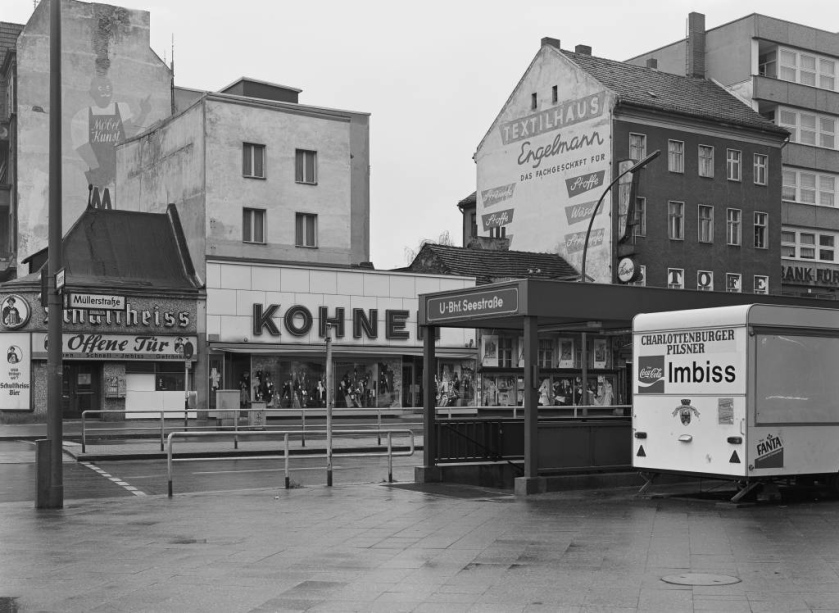
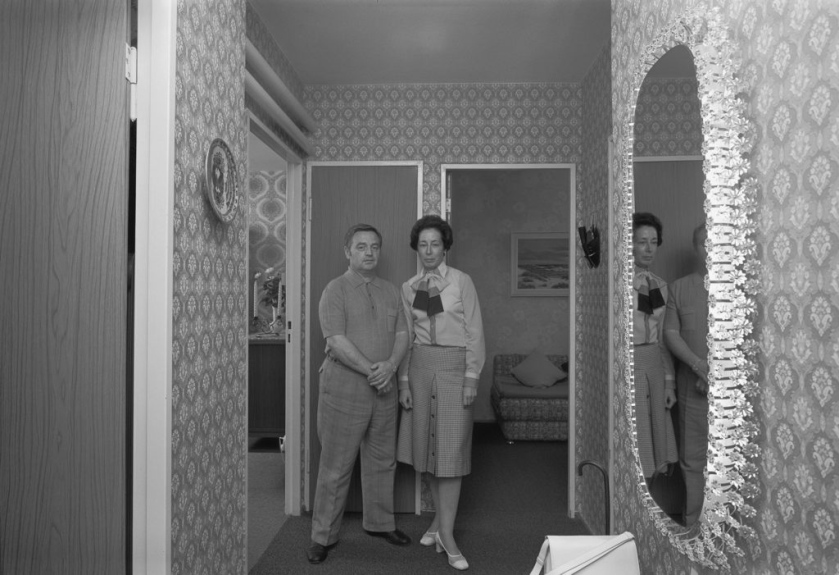
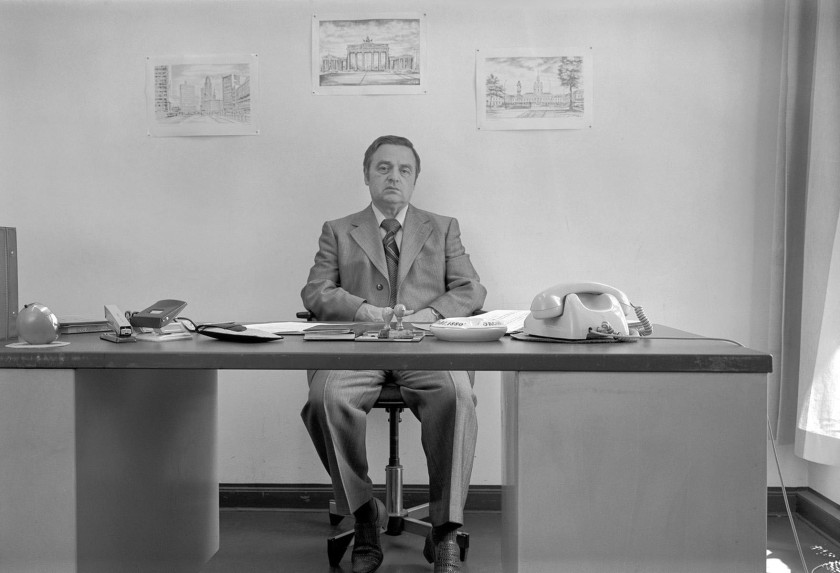
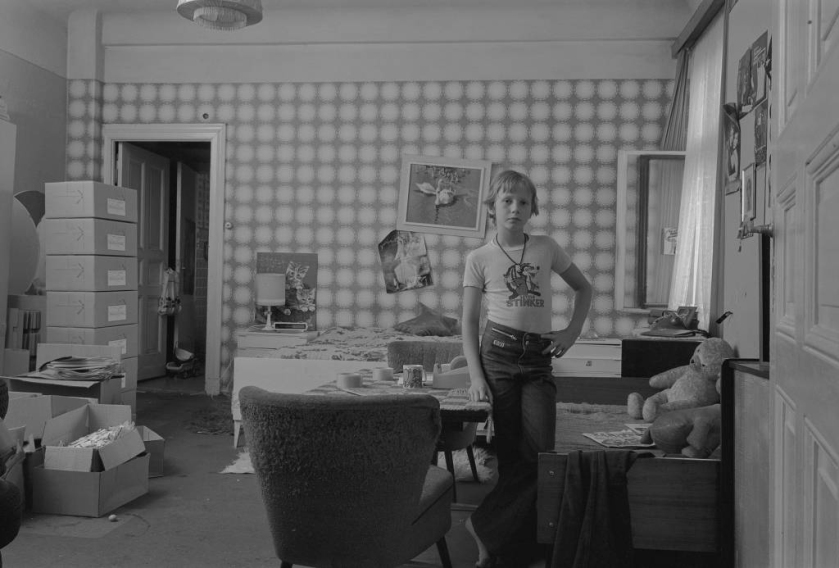
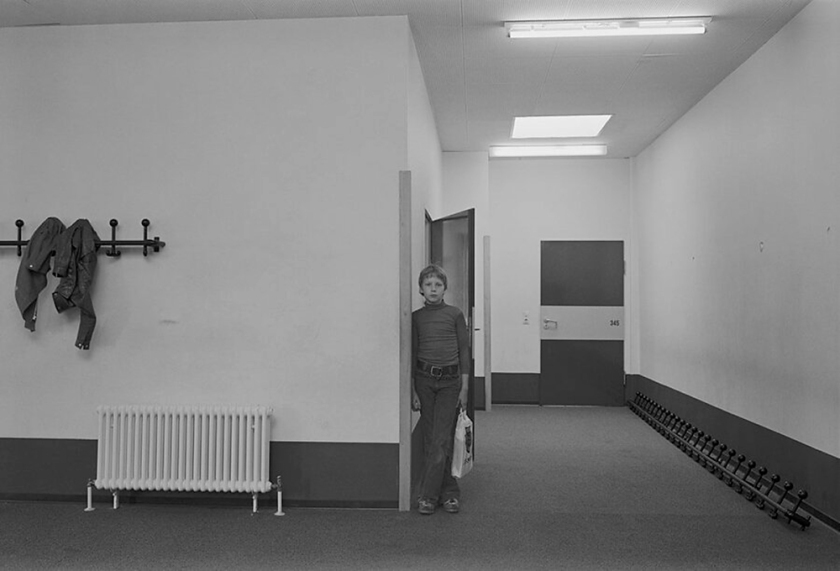


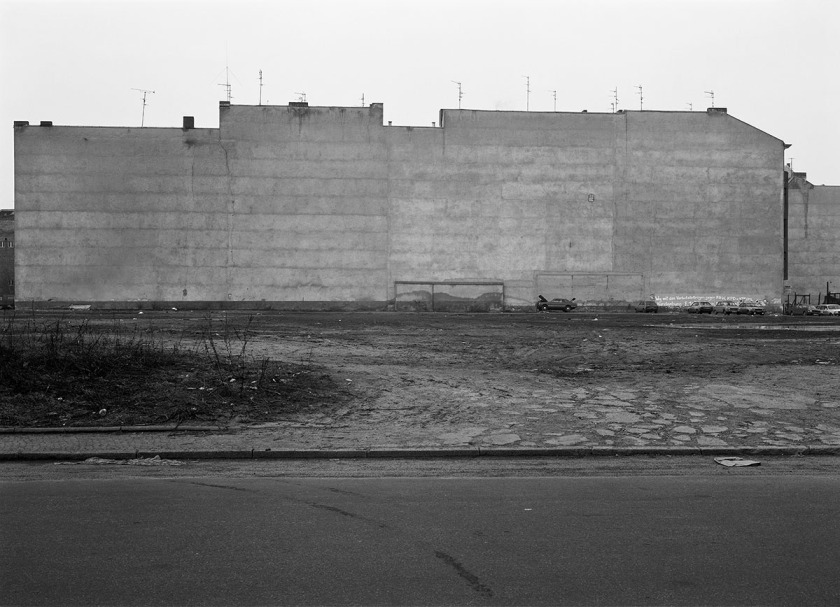





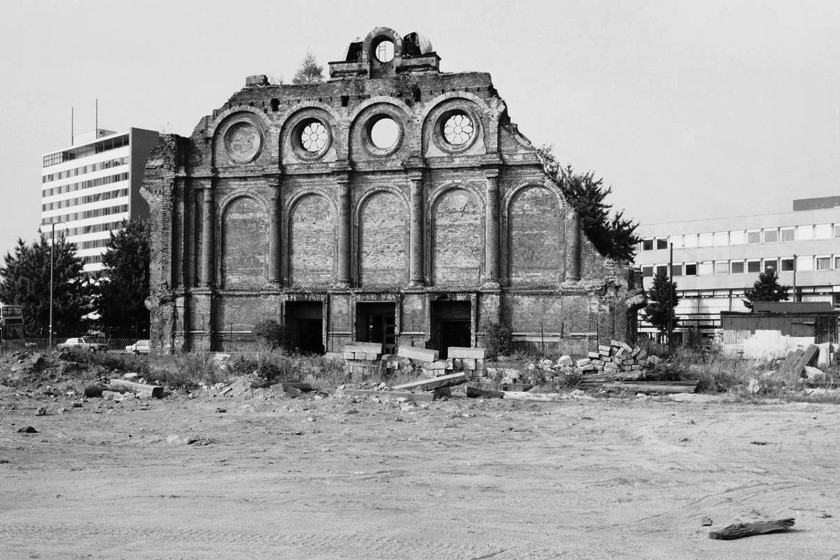

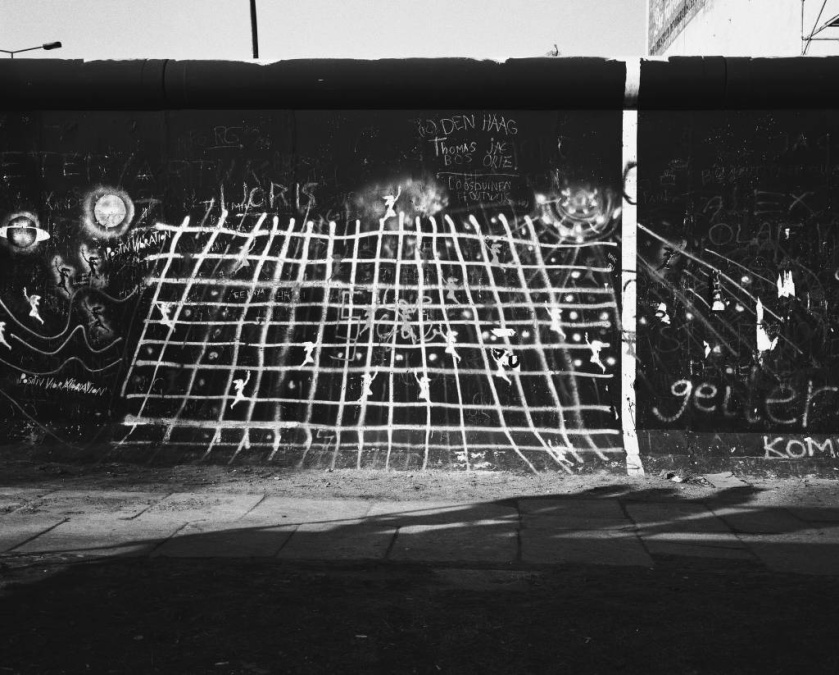





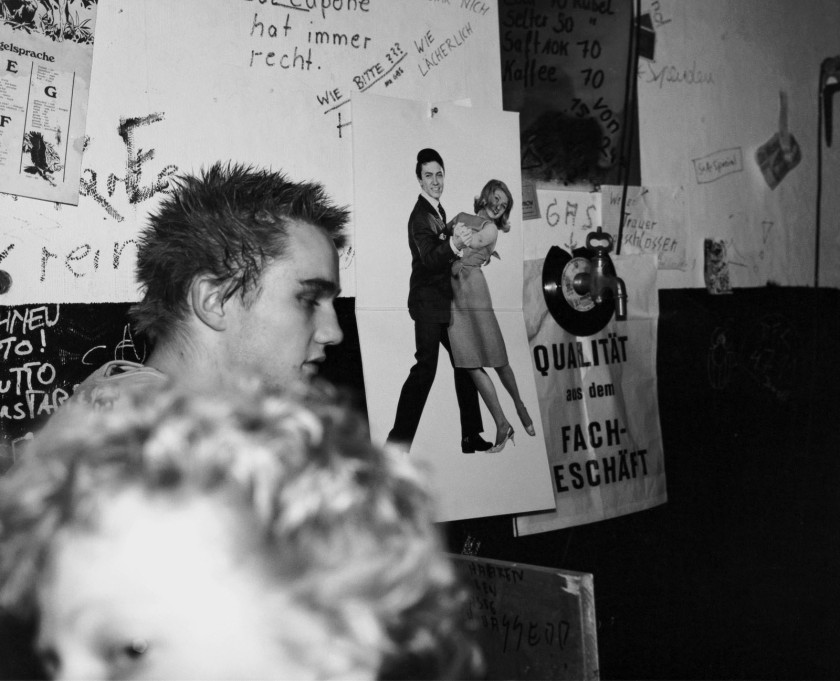
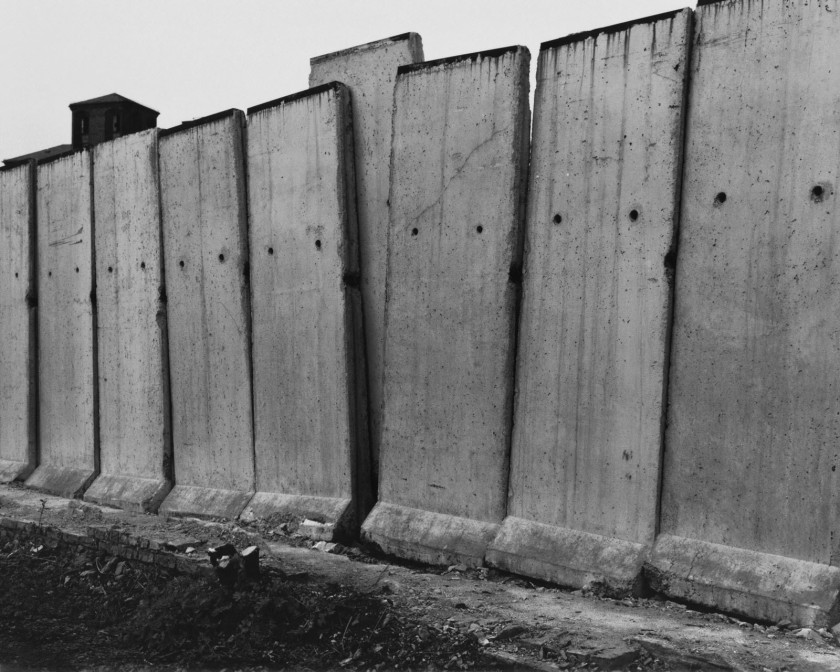

































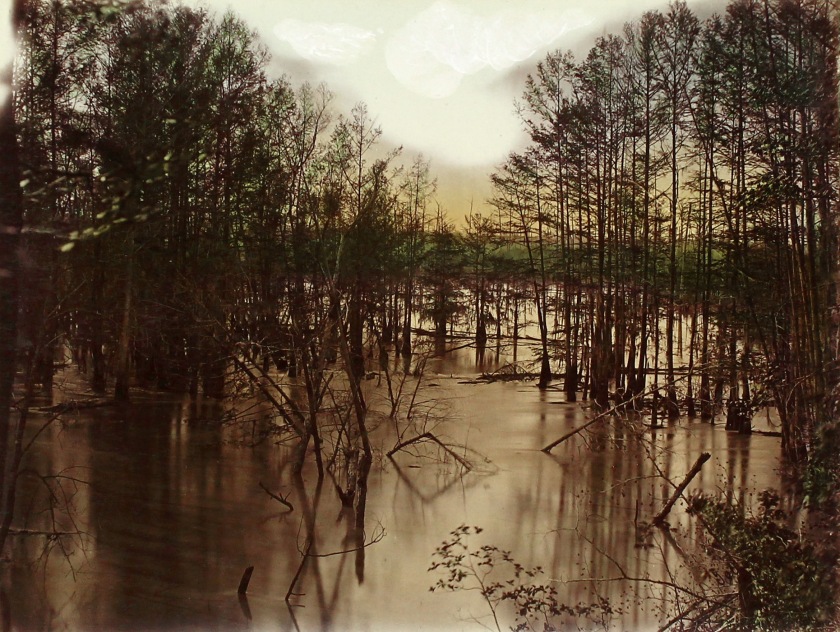















![Unknown photographer. 'Untitled [Members of a Cavalry unit at Fort Grant, A.T. in 1876 showing the variety of both clothing and headgear in use by the Army in the mid-1870s]' 1876 Unknown photographer. 'Untitled [Members of a Cavalry unit at Fort Grant, A.T. in 1876 showing the variety of both clothing and headgear in use by the Army in the mid-1870s]' 1876](https://artblart.com/wp-content/uploads/2018/09/us-army-uniforms-1870s-web.jpg?w=840)


You must be logged in to post a comment.